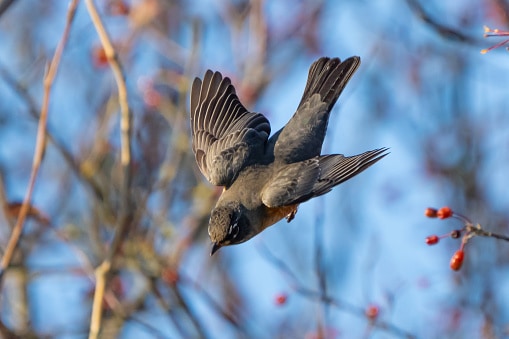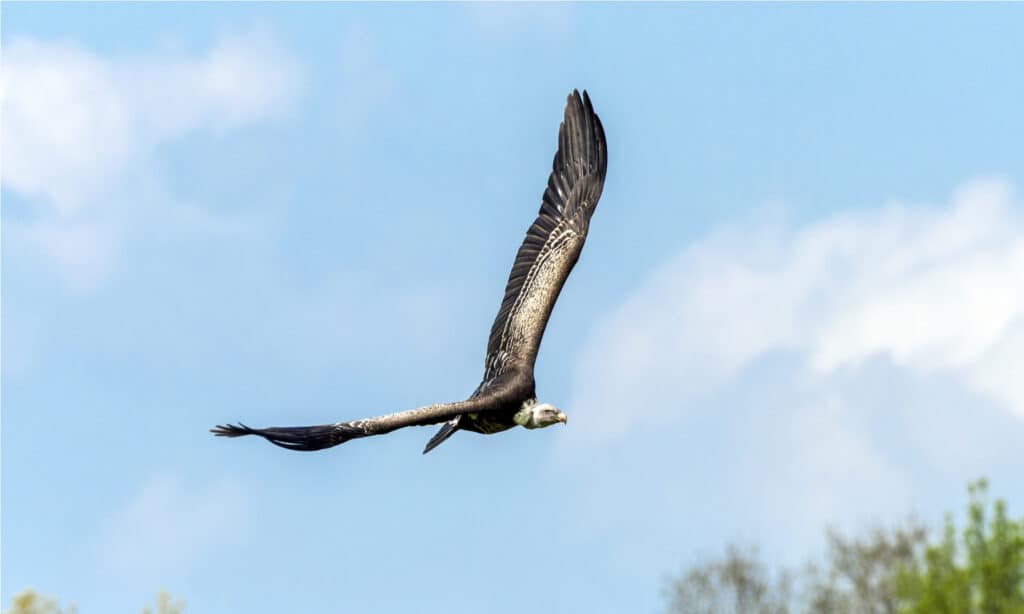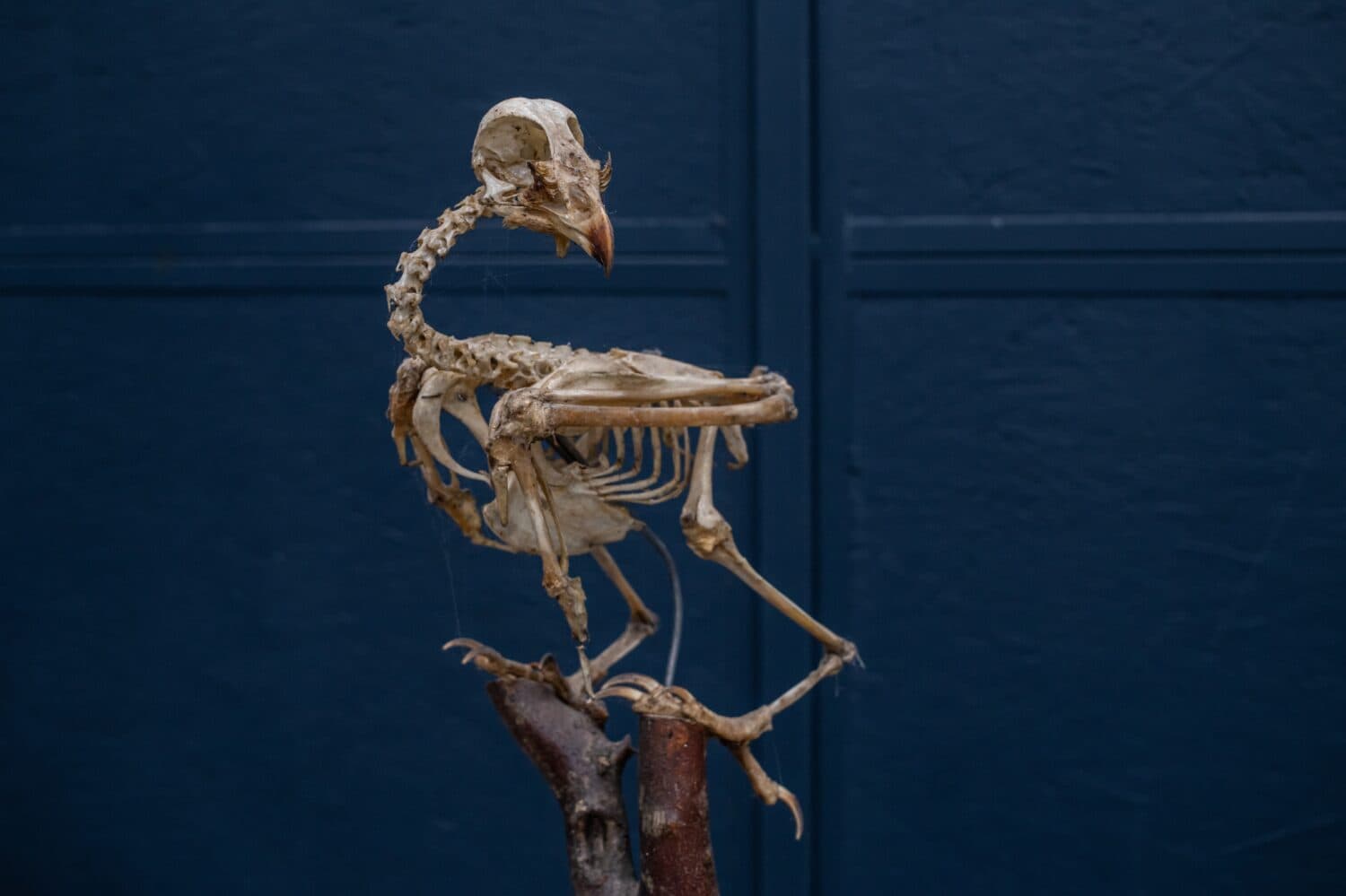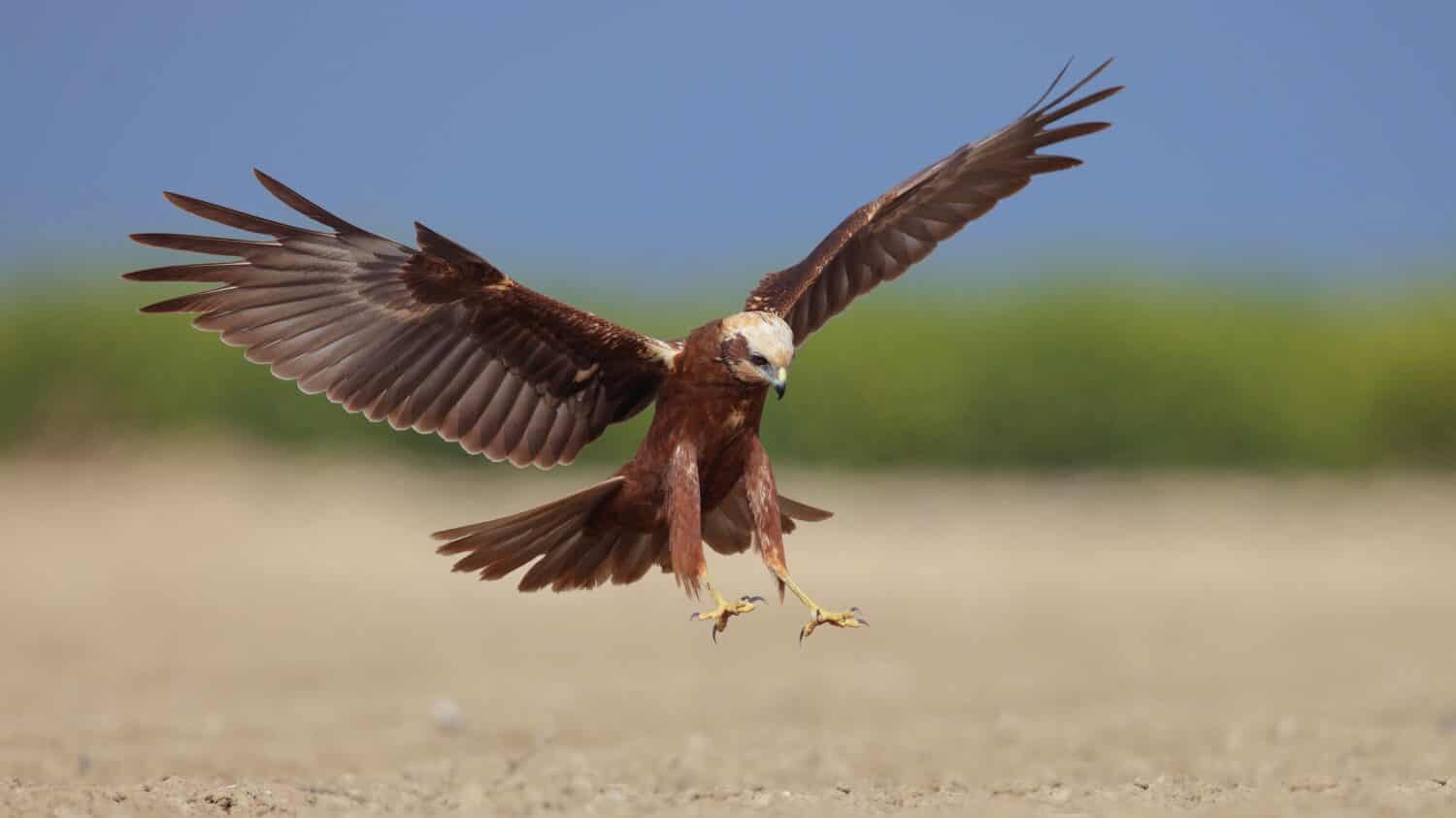Flight. It is a fascinating concept, one that may often leave people confused. After all, as a species unable to reach the skies ourselves without the help of modern technology, looking at the different animals able to do so can raise some questions. Specifically, how exactly do birds fly?
Below, learn everything you need to know about birds and their ability to fly. This includes how exactly they fly as well as how their bodies are designed for flight. Ready to learn more? Let’s dive in!
How Do Birds Fly?
One of the most important actions during flight is the flapping motion. Birds flap their wings in an up-and-down motion in order to create physical forces known as thrust and lift. Thrust propels the bird forward, while lift increases its height in the air.
It is important to remember that air is a fluid. As a result, when birds flap their wings downward, they are applying a force that pushes them upward through the air. The best way to envision this is like swimming underwater. Once you reach the bottom of the pool and wish to go to the surface, you’ll likely start out with your arms upwards or at your side and push them downward in a flapping motion.
This is all done thanks to the bird’s strong pectoral muscles. However, their feathers and the shape of their wings also help. These features allow for the air to move over their wings. This, paired with the lift force they’ve generated through flapping, allows them to take flight.
Once in the air, the responsibility of flight falls onto the tail as well. While the wings are still engaged in creating lift and keeping the bird in the air, whether through active or passive means, the tail helps the bird steer. Think about the rudder on a ship: it moves in such a way to help with direction.
In all, flight in birds comes down to physics and utilizing natural forces to become airborne. This includes creating lift, reducing air resistance, and similar actions. The overall goal is to create an upward lift force strong enough that it overcomes the downward forces in play, like gravity. The video below from the Canadian Museum of Nature offers a helpful visual demonstration of these forces and how they affect avian flight.
Do All Birds Fly the Same?
Believe it or not, not all birds fly the same. Although they all maintain at least some aspects of the mechanics of flight as discussed above, such as flapping their wings or using their tails to steer, the exact flight patterns of birds vary. Some birds will prefer to fly actively, flapping their wings more often. Others prefer to soar with little flapping.

Many species of vultures prefer to passively soar than engage in active flight.
©GarySang/Shutterstock.com
Types of Wing Shapes and Their Functions
As you learned above, not all birds fly the same way. Some species, such as eagles or hawks, are more prone to passive soaring along thermals or upward bursts of warm air. Other species, such as falcons, have wings designed to reach top speeds quickly. Below, explore some of the most common wing shapes and their functions in flight.
Elliptical Wings
Elliptical wings are short, with an overall rounded shape. These feathers are essential to living in an area that requires fast but tight movements, such as darting in between trees. As a result, they are most common in species that live in these closed-in areas.
Some of the types of birds with elliptical wings include certain species of woodpeckers, some hawks, and robins.

The
American robin
has elliptical wings.
©Jeff Huth/iStock via Getty Images
Active Soaring Wings
Active soaring wings are most common among seabirds. Wings that fall into this category are longer than they are wide, and they’re quite heavy. As a result of this, it can be difficult for species with active, soaring wings to get into the air. Once they’re in flight, though, they are able to soar without having to flap constantly.
You’re most likely to see active soaring wings among albatrosses and gulls.

Wings in species like the
albatross
are known as active soaring wings.
©Agami Photo Agency/Shutterstock.com
Passive Soaring Wings
As mentioned above, passive soaring wings are designed for cruising the sky with low energy consumption. They are shorter than active wings, which allows for an easier takeoff. These birds may not be able to navigate closed-in habitats like those with elliptical wings, but they can do so with more ease than active soaring birds.
Passive soaring wings are most common among birds of prey. This includes species such as vultures, some hawks, and eagles.

Passive soaring wings are short, with widespread feather tips adept for soaring.
©Cinematographer/Shutterstock.com
High-Speed Wings
High-speed wings are designed just for that purpose: helping the bird reach top speeds for a short period of time. The wings themselves are often short and pointed, with a rather flat shape. They blend into the body, which helps to reduce drag that could slow the bird.
One of the best examples of a species with high-speed wings is the peregrine falcon.

The peregrine falcon is one of the best examples of a species with high-speed wings.
©Harry Collins Photography/Shutterstock.com
How Are Birds’ Bodies Designed to Fly?
You’ll find that wing size and shape aren’t the only features on a bird that help it to fly. Below, learn the other interesting facts about bird anatomy that have helped them rule the skies!
Avian Bones
First, did you know that birds have hollow bones? When you were younger, if you learned this fact, you may have been told it is to make birds lighter. After all, a lighter weight must make it easier to fly. However, according to one study from the University of Massachusetts Amherst, this might not necessarily be true. Instead, bird bones, despite being hollow, may actually weigh more than those of animals of the same size. This means that if you were to take a bird that weighs two ounces altogether and a squirrel of the same size, the bird’s skeleton would actually weigh more.
Although they are hollow, as Elizabeth Dumont explains in her study, bird bones are denser than other species. This creates a heavier weight despite the bones appearing as if they should weigh less than non-hollow bones. But how does this aid in flying, if not by creating a lighter load?
It’s important to first understand that bird bones aren’t just hollow. Instead, they’re pneumatized. This means that they are full of air. As a bird grows, the air sacks of its lungs are able to extend into the bones. They also have a unique placement of position of these air sacks. The overall result? Birds are able to absorb oxygen while both inhaling and exhaling. This is important when performing high-stress exercises like flying in low-oxygen zones (such as the Himalayas).

Although hollow, bird bones are dense and full of air.
©byruineves/Shutterstock.com
Feather Anatomy
The structure of a feather is highly fascinating. There are several types of feathers, each with their own unique anatomy. The seven types of feathers include:
- Wing feathers
- Tail feathers
- Down
- Contour
- Semiplume
- Bristle
- Filoplume.
Although these types of feathers may vary in location and appearance, they all (excluding down) share three basic features: a calamus, rachis, and barbs. Down only has a calamus and barbs.
The calamus is the hollow portion that makes up the bottom center of the feather. It also connects to the skin, and, in a quill pen, it is the portion you would write with. The rachis is the thinner central portion from which the barbs are attached. The barbs are the “fluff” of the feather. In more complex terms, it is a strand of keratin (the material that helps create hair) connected to the rachis. The barbs extend laterally from the rachis.
One of the best ways to think about this is by considering a tree. The calamus is the root of the tree, while the rachis is the trunk. The barbs, then, are the branches. However, what are the leaves? Each barb is connected to a secondary branch known as the barbules, which have small hooks to give the feather’s edge its shape. While leaves may not perform this same action, they can help visualize how the barbules extend from the barbs, which extend from the rachis.

There are several different types of bird feathers, ranging from tail feathers to down.
©Super Prin/Shutterstock.com
Why Are Feathers Important?
While feathers may not look like hair or fur but, believe it or not, they function in a similar way. Outside of aiding in flight, feathers serve three major purposes: keeping birds warm, dry, and disguised. Depending on the species, they may also have other purposes, such as helping individuals find mates.
Thank you for reading! Have some feedback for us? Contact the AZ Animals editorial team.








